

Hypoallergenic Dogs – Do They Exist?
Many people wish they could get a dog, but never do because of allergies. The good news is that whether you or a family member has an allergy, you don’t have to give up on your dog dreams! Introducing nearly hypoallergenic dogs.

Writer Jannah Berkley
10 min read
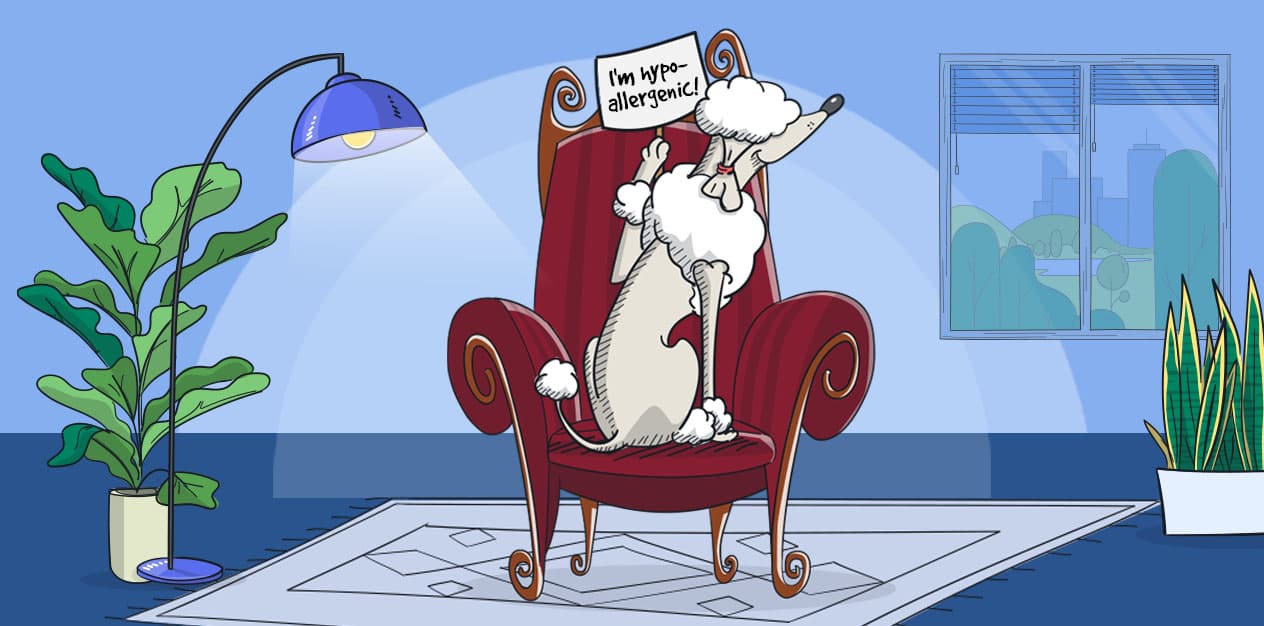
Dogs may be man’s best friend, but for some people, they can cause eye swelling, tears, itching, and sneezing. Let’s be honest – that special kind of companionship that only a dog can bring just isn’t the same as cuddling a stuffed animal. But what can someone who’s allergic to dogs do if they want a four-legged furry friend? The answer: adopt a hypoallergenic one! There are quite a few breeds to choose from, but let’s examine the link between dogs and allergies first.
What causes allergies to dogs?
When people with allergies come into direct contact with dogs, or even are just in the vicinity of them, there’s a spectrum of reactions. They may develop a slight rash, tear up a little, have a runny nose, or even have a severe asthma attack. Some people may even get the whole package. Lucky them, right? These allergic reactions are caused by a certain protein in the dog’s skin/fur, which the immune system recognizes as a disease-generating invader. It then activates defense mechanisms that are normally in place to fight bacteria or viruses. This protein can be found on the dog’s skin, and sometimes also in their urine and saliva. The particles then catch a ride on the fur that dogs shed and are inhaled into our airways or come into contact with the skin of everyone around.
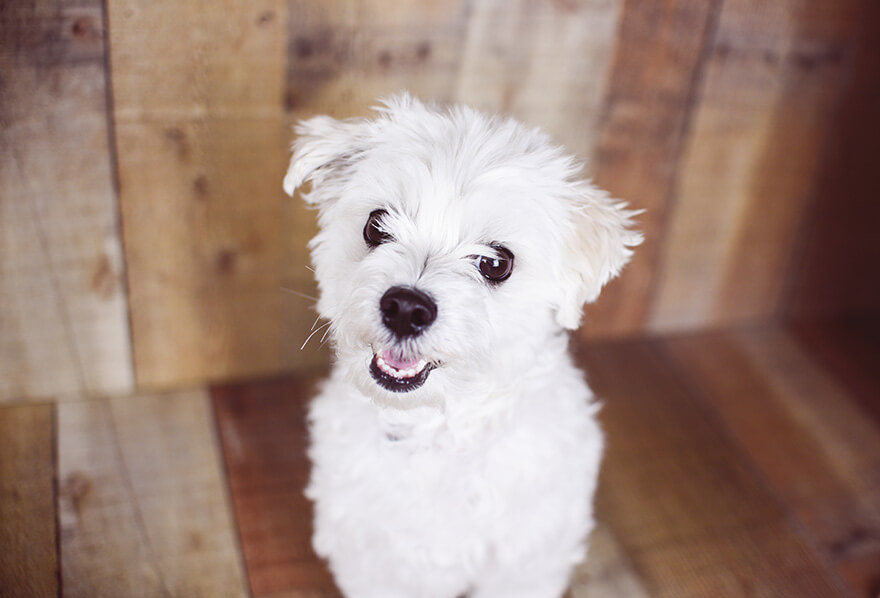
What are the symptoms of dog allergies?
The common symptoms of a dog allergy include:
- Burning and watery eyes
- Runny nose
- Sneezing
- Skin rash and itching
These symptoms can be mistakenly interpreted as the flu or a common cold. Unlike those illnesses, though, with an allergy, there should be relief as soon as the exposure to the allergen stops. If an allergic person enters a house with a dog, they’d likely develop symptoms within a few minutes. However, if the allergic person doesn’t carry any “souvenirs” from the dog when they leave (i.e. saliva, fur), chances are that just a few minutes after leaving, they’ll feel significantly better.
Dog allergy test
The first step is to find an allergist – a doctor who specializes in allergies. They’ll start by asking you some questions and then perform a skin test. This test consists of dripping a few drops of different potential allergens on the forearm. One of the drops contains the dog allergen. Then the top layer of skin is lightly pricked with a needle (don’t worry, it’s a tiny one!). If there’s a reaction to one of the allergens, that spot will swell up and look similar to a mosquito bite. The more severe the swelling, redness, and itching around it, the more severe the allergy.

How do you treat dog allergies?
Indeed, allergies don’t simply go away on their own, but many things can be done to reduce allergy symptoms and to reduce exposure to dog allergens.
- Limit how long your dog stays in places you spend a lot of time in (like your bedroom or car).
- Keep them off the furniture at home.
- The less rugs or carpets, the better.
- Clean the house often (especially the areas where the dog spends most of their time).
- Have good ventilation (or get an air filter).
- Comb your dog regularly.
- Bathe your dog when needed.
Hypoallergenic dogs? Do they exist?
If you have a dog allergy and haven’t adopted a dog yet, this section is for you. The simplest solution is to find a hypoallergenic breed. Now, “hypoallergenic” doesn’t mean that these breeds don’t carry the same proteins as other dogs. What it actually means is that they shed less, so they should cause less sensitivity to affected people. With less fur flying around, there’s less exposure to the allergens. Pretty simple.
There are more than 30 breeds in the world that are considered hypoallergenic. That’s a pretty wide variety that allows everyone to find a breed that suits them, their family, their living space, and their environment.
Here’s a condensed list of the most common hypoallergenic dog breeds.
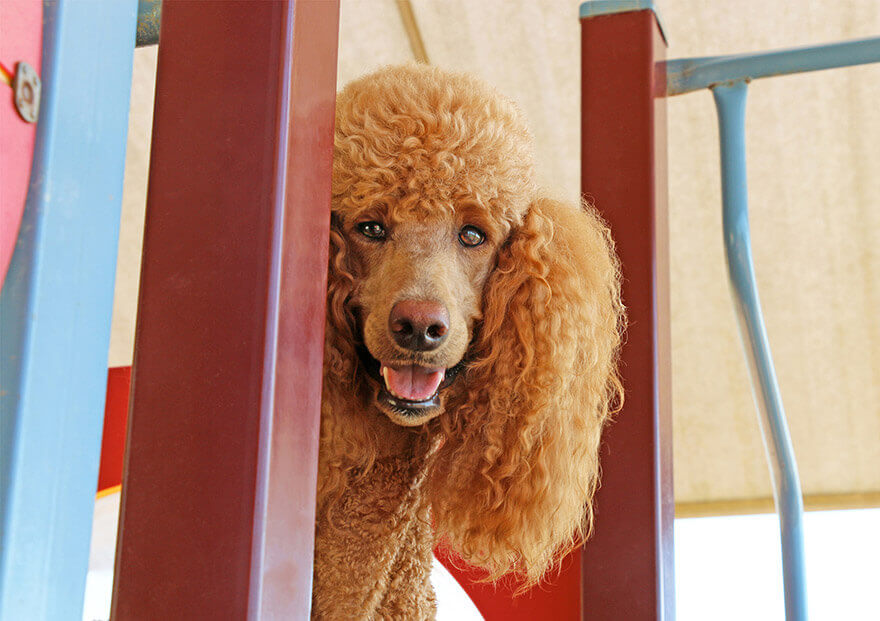
Hypoallergenic dog types
Affenpinscher
Affenpinschers are small dogs with a ton of confidence. They look a bit like gremlins, so it’s pretty hard to miss them. They shed very little hair and love their owners very much.
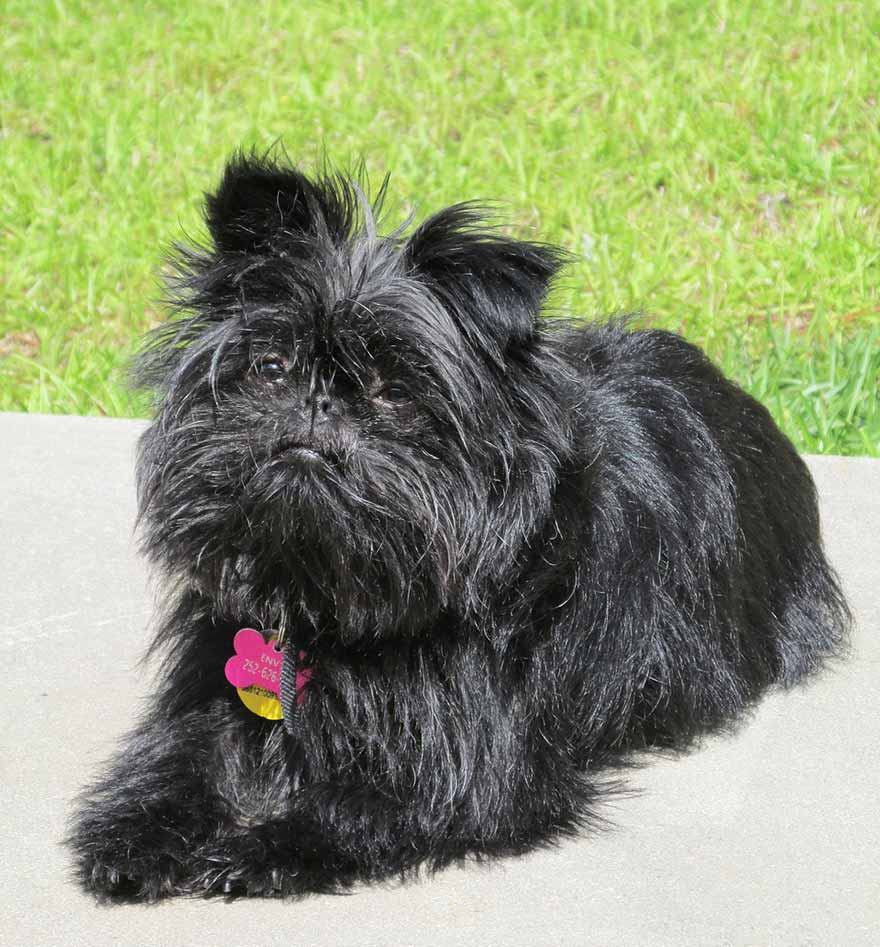
Afghan Hound
The Afghan Hound is a medium- to large-sized dog, which makes them a standout compared to all the smaller dogs on this list. They have regal energy and look like a walking carpet (thanks to their long, straight hair). But royalty is high maintenance – they need a weekly comb and a monthly haircut. Otherwise, they’ll look less like Rapunzel, and more like Bob Marley.
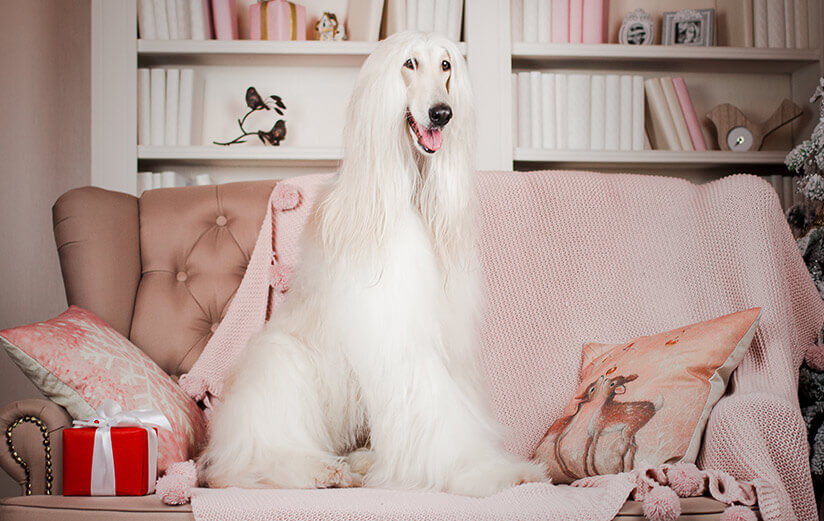
Bichon Frisé
In case you were wondering about Bichon Frisé‘s name – the first word is a group of toy dogs, while the second means “curly” in French. Fittingly, this pup has a signature puffy, white hairdo and boasts very minimal shedding. Their small size makes them a perfect dog for small spaces and cities. They’re very fun to comb – which is convenient ’cause they need to be combed often!

Chinese Crested
A small and playful breed that can be either bald or hairy. The hairy version needs weekly brushing. It’s recommended to wash the bald ones every few weeks to remove any dead skin that could cause sensitivity.

Maltese
The Maltese is a tiny and happy dog, full of love and excited to share it. They love cuddling with their owners. If you want to let them grow their white fur out, you have to comb it often and untie the knots. Or, if you prefer, you can cut it and keep it short.
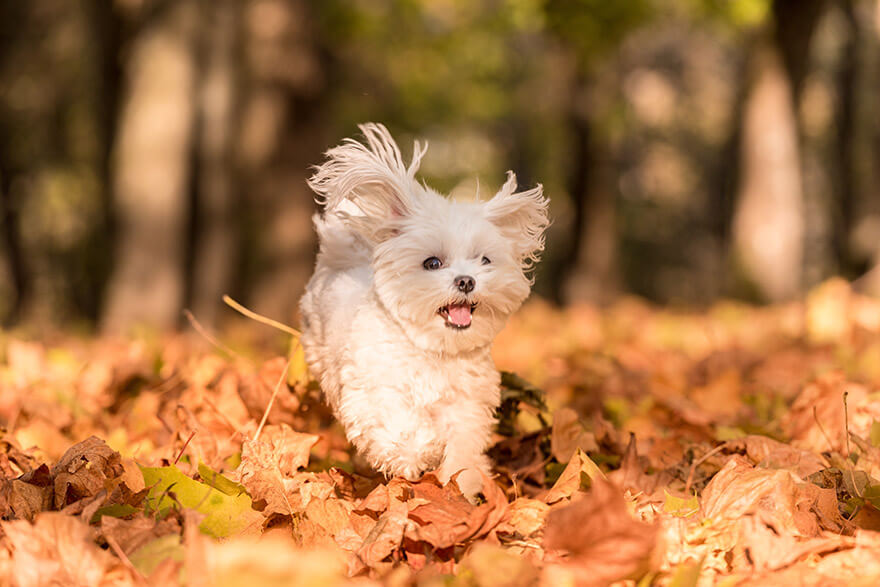
Giant Poodle
One of the most popular breeds in the world (it also has a toy breed!). The poodle is easy to recognize thanks to their gorgeous curls. They hardly shed hair, but as all fellow curly-haired humans know – curls require maintenance and frequent haircuts.
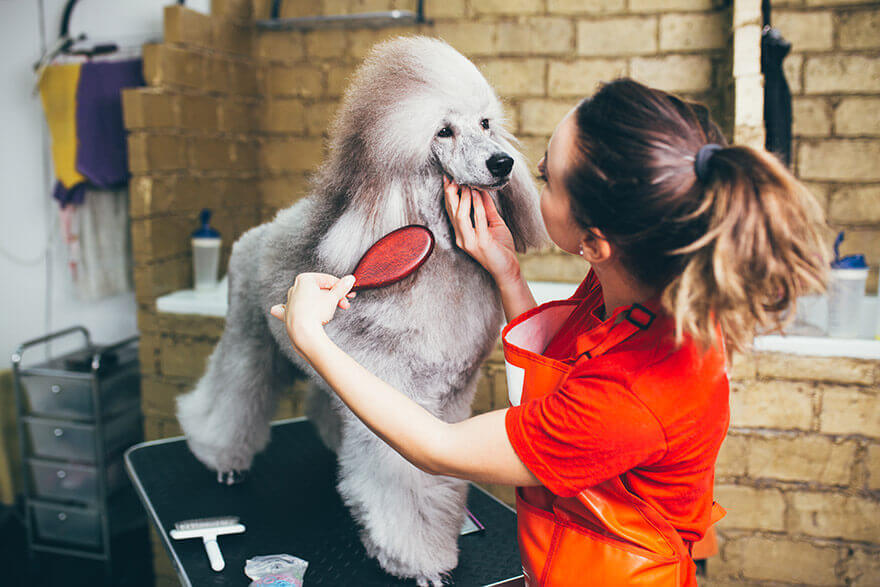
Schnauzer
The Schnauzer comes in three sizes: mini, standard, and giant. In most cases, the Giant Schnauzer has a protective and docile nature. They shed little hair but need haircuts every once in a while. The Standard Schnauzer and the Miniature Schnauzer are often friendly and playful. They need regular brushing of the fur and a haircut once a month or so.
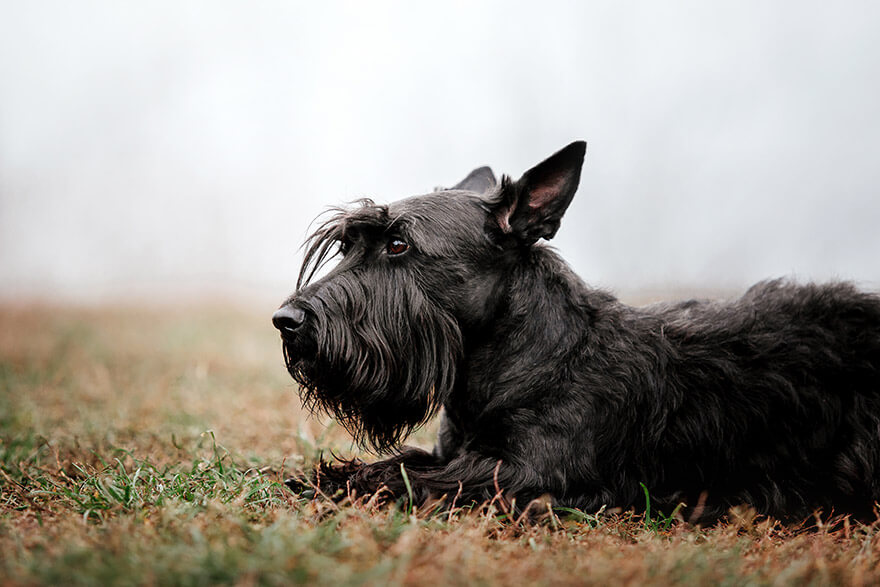
Shih Tzu
The Shih Tzu is a tiny domestic dog, with long hair that’s as soft as silk. They hardly ever shed. They’re cute, gentle and playful. But they do need extra help maintaining their bangs.
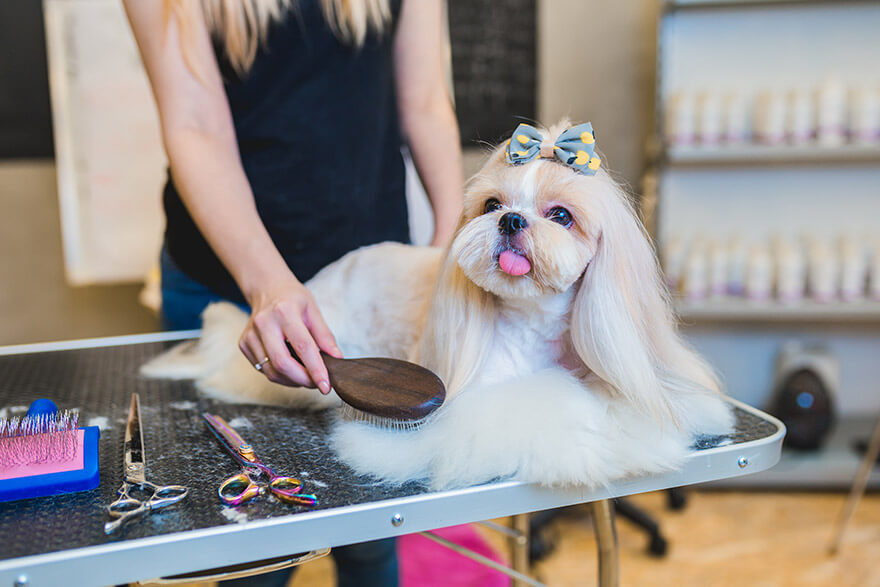
West Highland Terrier (Westie)
A small and alert dog, intelligent and energetic. They have a captivating and cute appearance, thanks to their tiny mouth and big black eyes. They have distinctly white fur, which doesn’t shed.
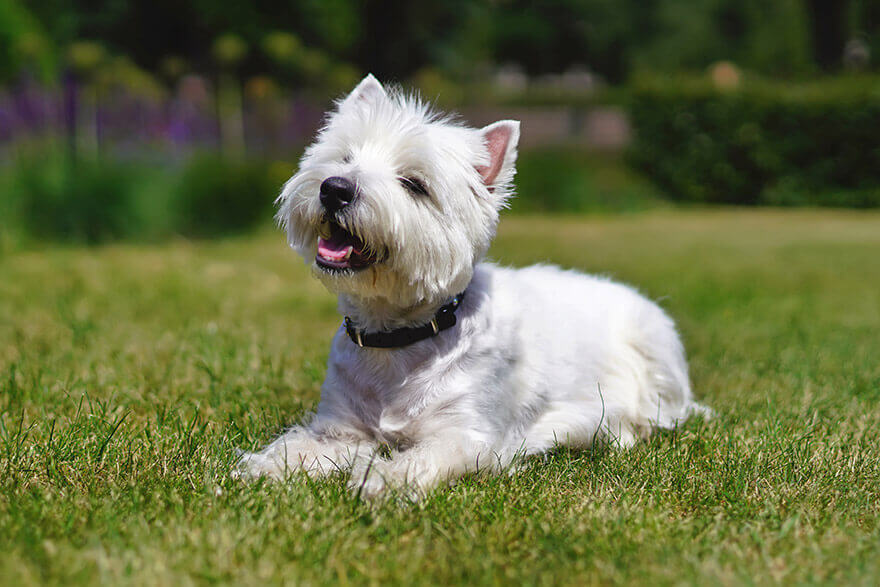
Yorkshire Terrier
The Yorkshire Terrier is a small and playful dog. They’re one of the most popular in the world! Their hair is soft, and they hardly shed – but they require regular combing.
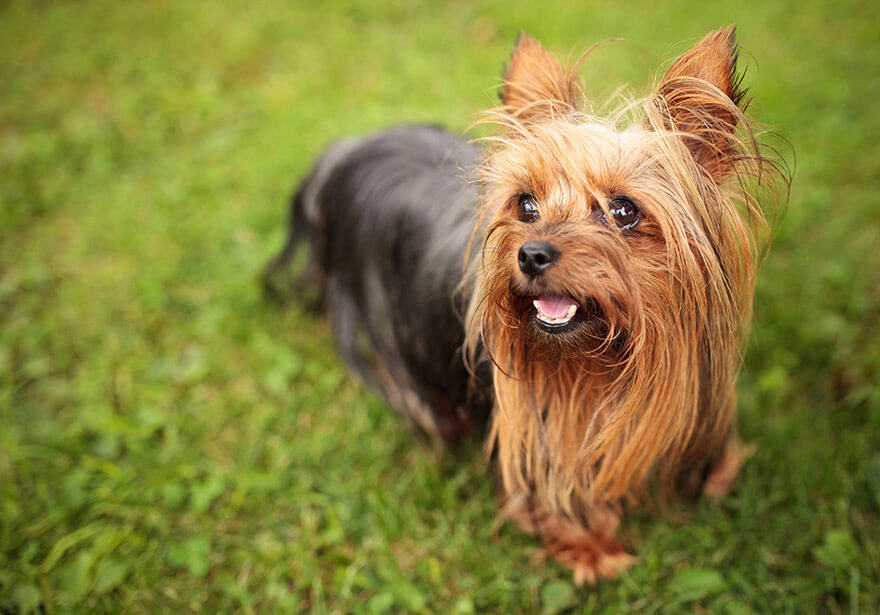
Airedale Terrier
The Airedale Terrier is a medium-sized, energetic, and smart dog. They need physical activity regularly, preferably things that also challenge their high intelligence. Their fur is curly and therefore requires a haircut once a month or so, and regular brushing (usually once a week). Their signature is the cylindrical shape of their mouth and nose.

Cairn Terrier
A tiny energetic dog. They’re a smart breed that requires regular exercise. They are pretty high maintenance when it comes to fur care (haircuts and brushing on the regular). Fun fact? One of the most famous Cairn Terriers is Toto from The Wizard of Oz.

Basenji
An odorless dog that never barks – the most you might hear from them is a yodel or a light howl. They are considered smart and self-confident and have short fur that rarely sheds. There is almost no need to wash or bathe them, which makes them super low maintenance. They’re known for their fox-like face and curved tail.

These are the most common, but what about all the other hypoallergenic breeds out there? Here’s a list of 16 more:
- American Hairless Terrier
- Fox Terrier
- Peruvian Hairless Dog
- Soft-Coated Wheaten Terrier
- Mexican Hairless Dog
- Coton de Tulear
- Irish Water Spaniel
- Kerry Blue Terrier
- Brisley Griffon
- Portuguese Water Dog
- Bedlington Terrier
- Lhasa Apso
- Havanese
- Bolognese
- Tibetan Terrier
- Maltipoo (cross between Maltese and Poodle)
Don’t miss out on dog joy
Dogs bring such positivity, light, and love into the home. And since there are so many options for hypoallergenic dogs, even with allergies you can enjoy their company.
Many dogs are given up for adoption because some family members have allergies. When they’re sent to shelter or rehomed, it’s extremely difficult for them. They don’t understand why they had to leave their comfort zone and can be extremely sad – even in a great new home.
If you already have a dog and have discovered an allergy, it’s worth trying to reduce exposure to the allergens first before giving them up.
If you’ve been considering adopting, but have had second thoughts due to your allergies, try spending time with any of the hypoallergenic dogs from the list and see how your body reacts.
Everything we said so for notwithstanding, we feel we’d be doing you a disservice if we didn’t mention once again that no dog is truly hypoallergenic, in the sense that they categorically can’t make anyone suffer an allergic reaction. Rather, the dogs we’ve highlighted here are referred to as hypoallergenic because of their minimal shedding, which greatly reduces the risk of allergic reactions. That risk unfortunately still exists if affected people are exposed to their dander or saliva.
Allergies or not, Animalia doesn’t discriminate – we cover all dog breeds, regardless of how much they may make their humans sneeze. One click and your pup will be covered too. With Animalia’s dog insurance, instead of vet bills, you can invest in nice, soft tissues.





We offer the most
comprehensive coverage
out there
car with a spare tire for life’s bumps.
Having Animalia is like a pimped-out
Rolls Royce with a swimming pool
in the trunk.



Get your pet insurance quote
Pet type
- Dog
- Cat
What is your pet's name?
Zip code






